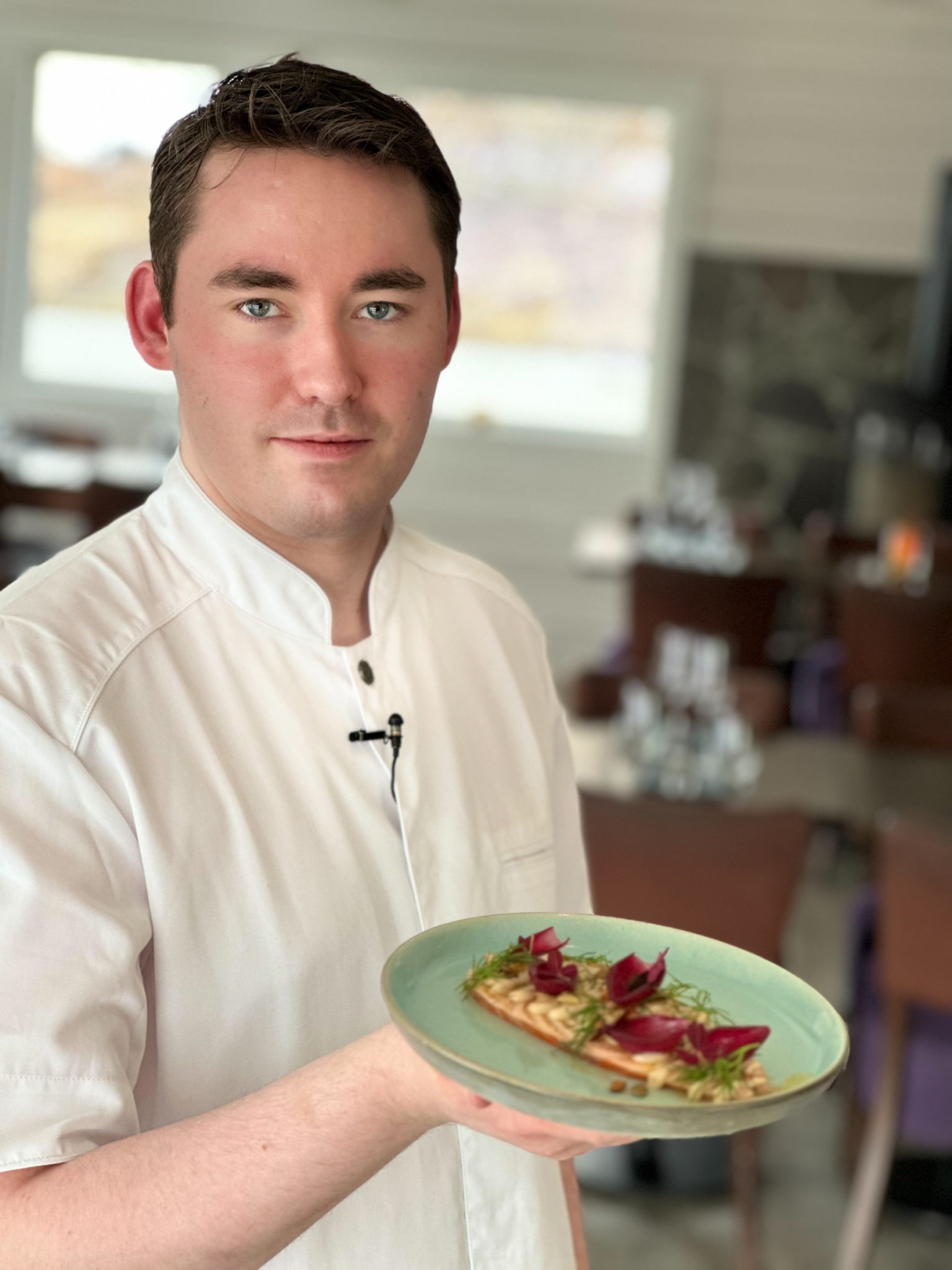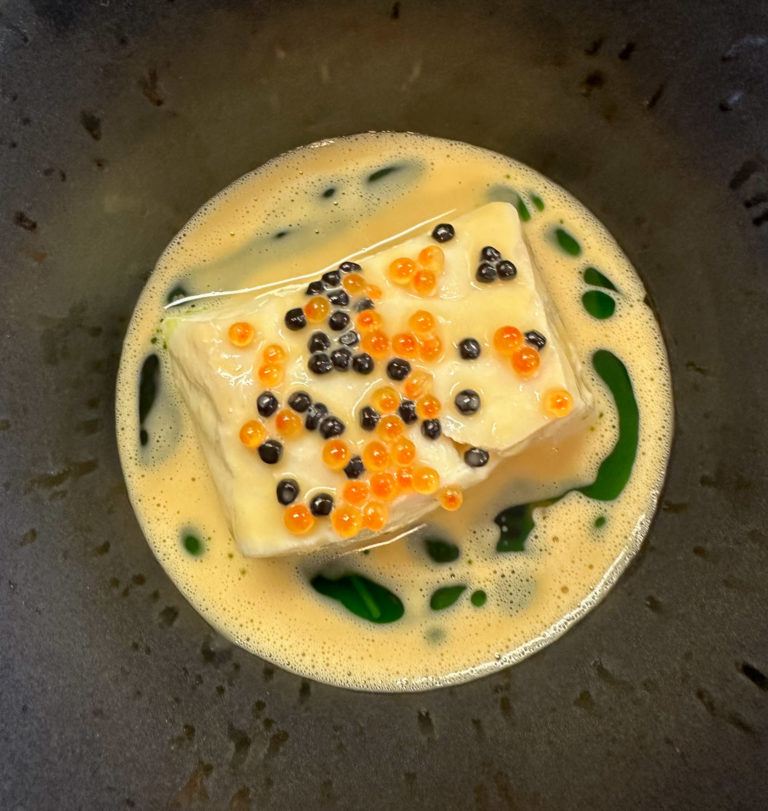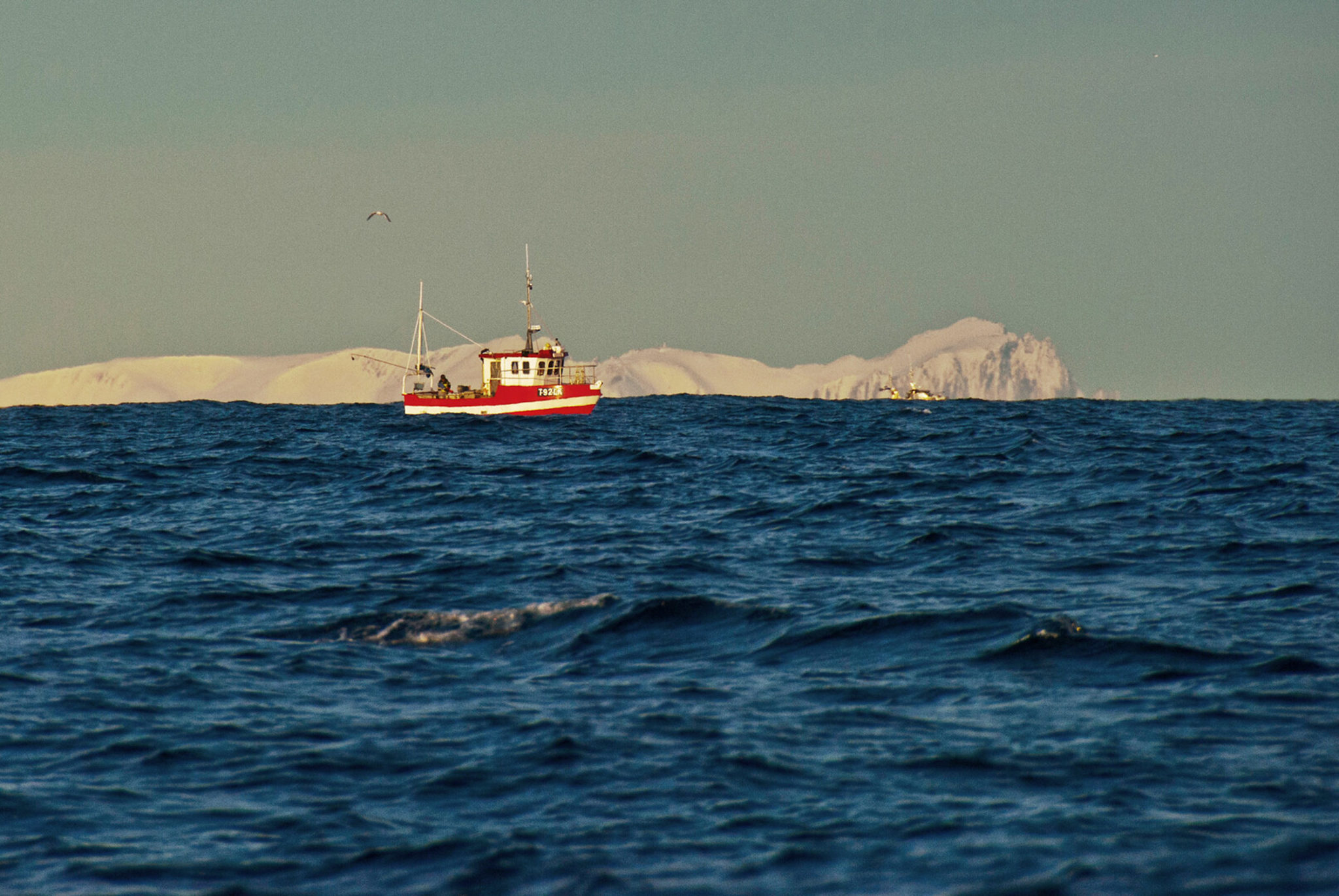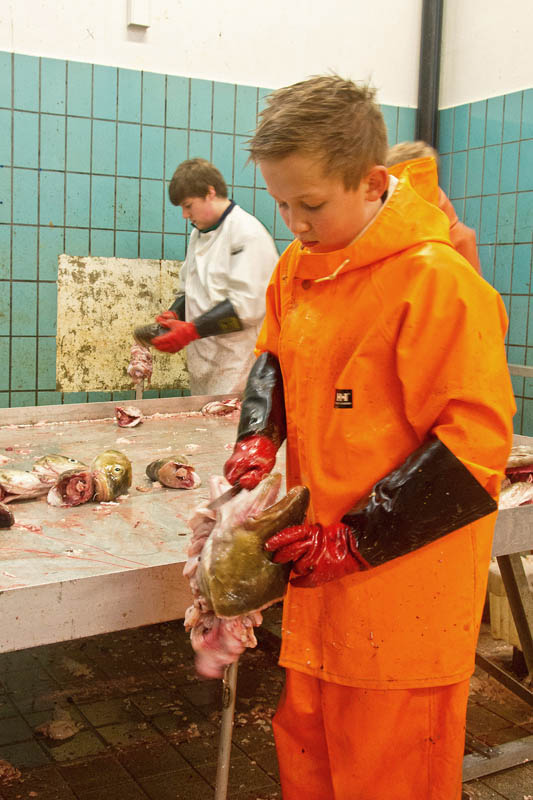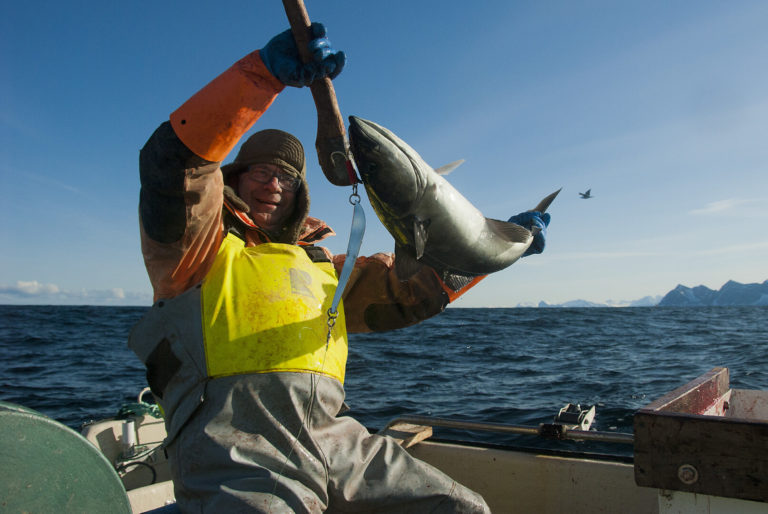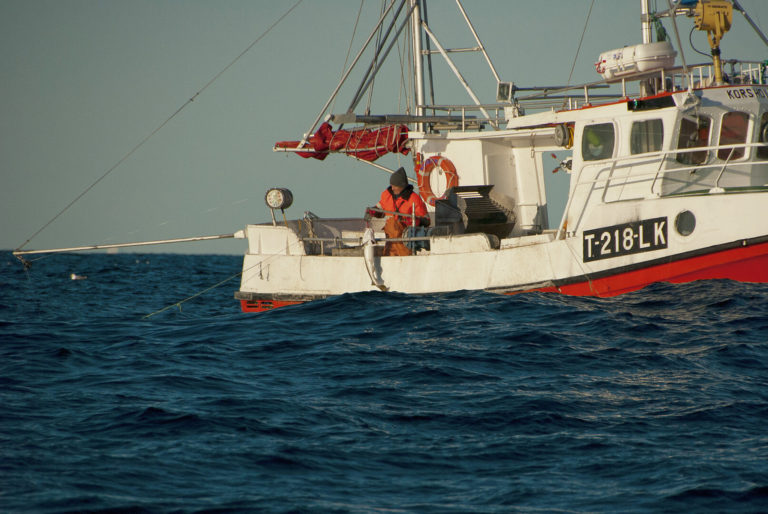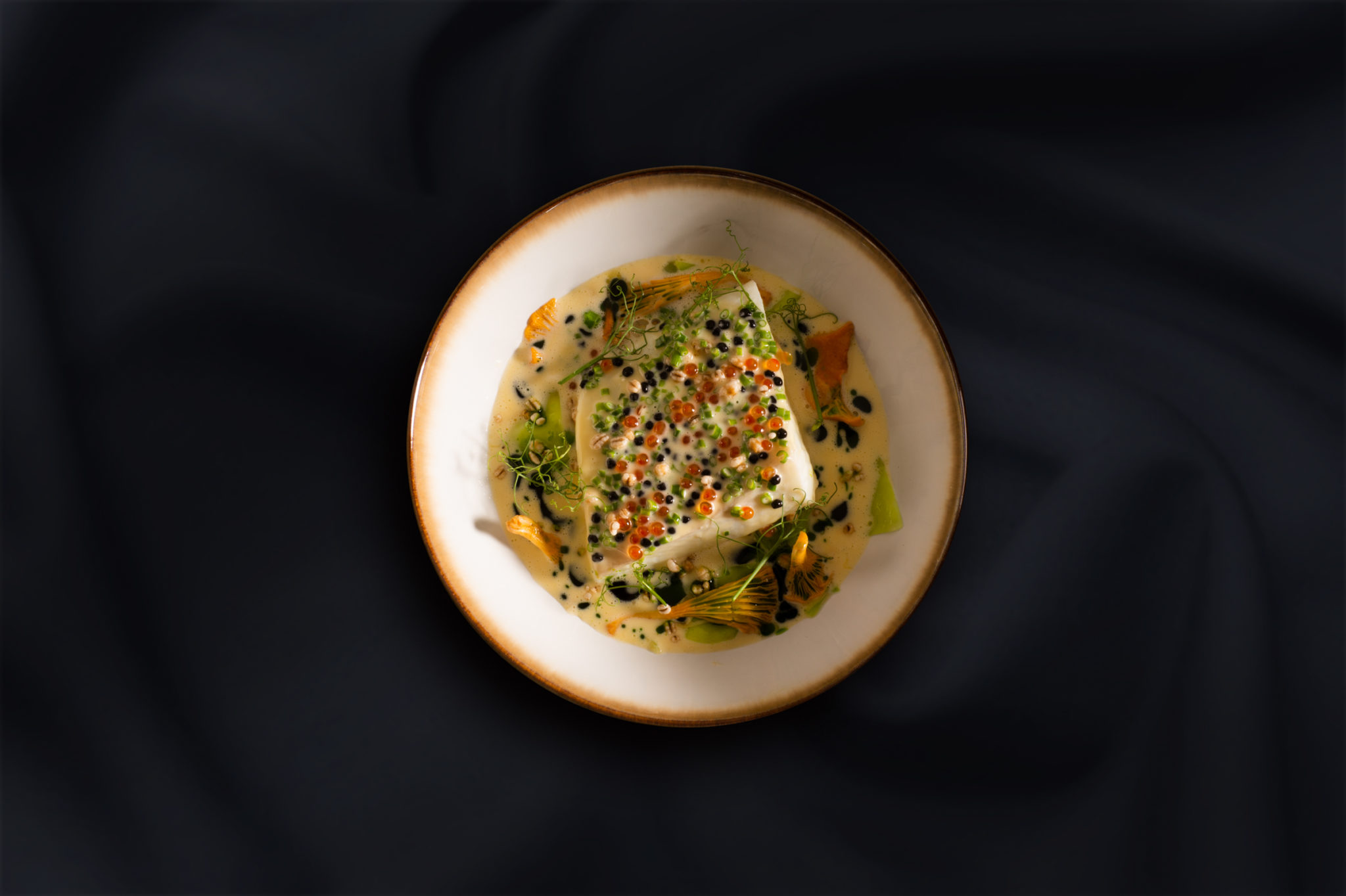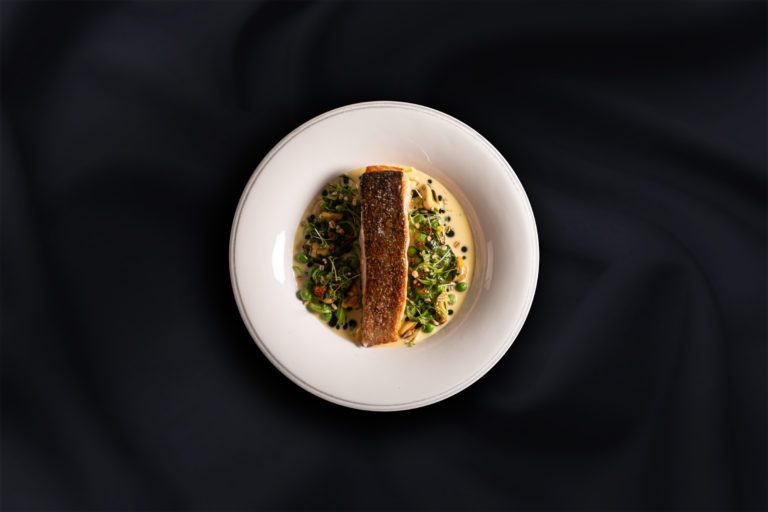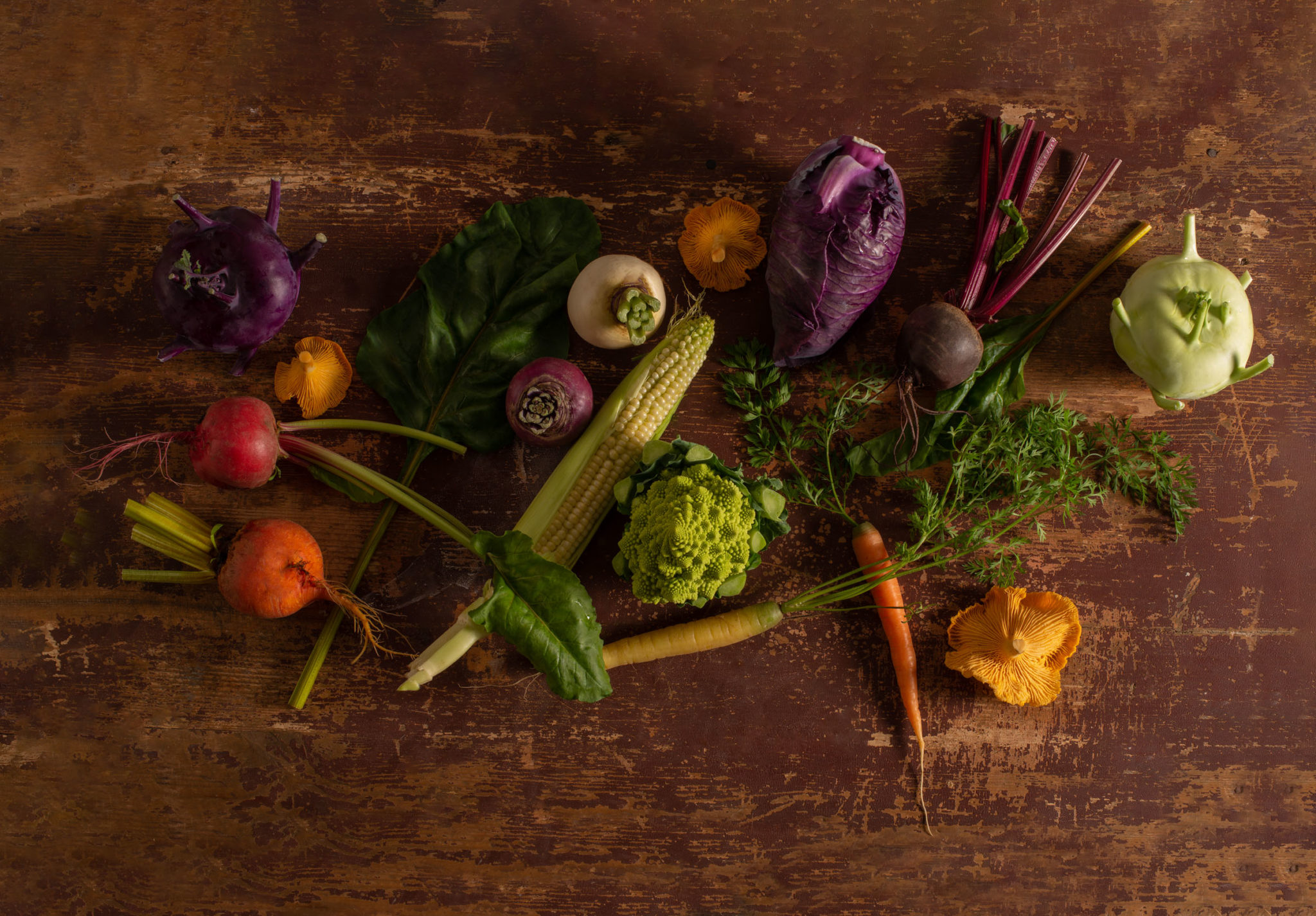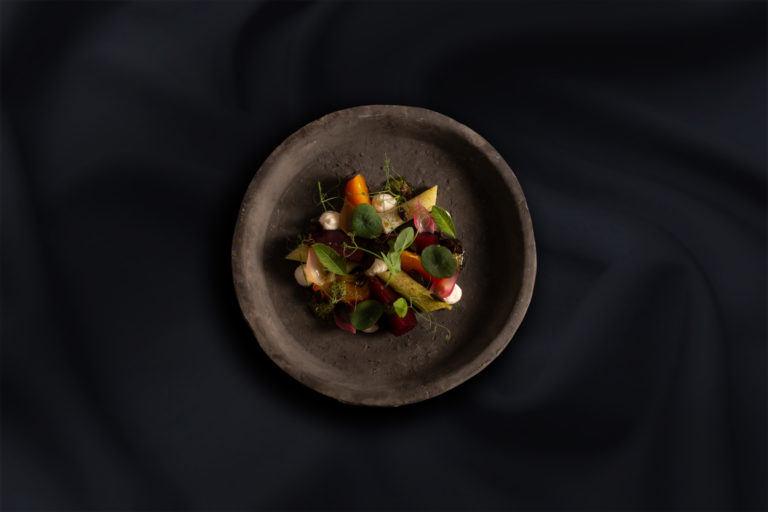Winter is cod season, and one shouldn’t miss the chance to taste fresh cod on a northern lights or ski visit to Northern Norway. We found someone who has been raised on authentic Northern Norwegian cuisine and has also travelled, seen, and tasted a bit of the wider world to guide us into the mysteries of cod.
Who do we ask about food on Senja island in the winter? Our contacts on the fairytale island all agreed, “ask Kenneth at Senja by Heart – he runs a great kitchen.” Kenneth Pettersen, age 28, at Senja by Heart in Torsken has training from the Kulinarisk akademi –a centre of expertise for good food and drink – as well as representing Norway on the National Culinary Team along with a host of different restaurants. When we meet him, he’s busy preparing legs of lamb to be cured into fenalår, a Norwegian charcuterie specialty.
In Winter, cod turns into skrei
The Norwegian-Arctic cod makes the annual migration from the cold waters southeast of Svalbard to the – relatively – tepid waters off Lofoten, Vesterålen, and Senja in January to March. And they do it for love. Our waters are turned into a love nest, and then the adults swim back up, and the fry follows suit by drifting with the Gulf Stream. That is, if it avoids the hooks of the fishermen. The Lofoten Fisheries date back 1000 years at least, and it is the most traditional of the seasonal fishing seasons along the Norwegian coast. We usually refer to the migrating cod as skrei in this period.
What is traditional food in the skrei season?
When Kenneth was seven years old, he was working in a fish processing plant cutting the tongues. Seven-year-olds working in a fish factory might sound shocking, but on the coast of Northern Norway, this is the norm. A classic dinner in this period is breaded, pan-fried cod’s tongues, served with potatoes, grated carrot, and a remoulade sauce. Kenneth is also a fan of the traditional “fiskegrateng” – the British fish pie is a close relative. Macaroni, béchamel sauce, and fish leftovers, with a crumb topping – it is an everyday delicacy. “Make more than one and freeze them in foil trays,” Kenneth says, “and you have dinner in 15 minutes next week.” Fast food à la Kenneth. “How about ‘mølja,’ the cult dish of the skrei season?” Kenneth is hesitant, “not my favorite – there are so many other good things.” That takes courage to say in the north!
Kenneth Grew Up with Good Cooking
“My father is a fisherman,” Kenneth says, “and a bit adventurous one at that.” Thus, Kenneth was familiar with many curious things from an early age. Cold-smoked Greenland halibut, pan-fried halibut, or poached pollack (saithe) – there is endless variation from the sea in winter. Shrimps and other shellfish are more succulent and tastier than in summer. A shrimp sandwich is the epitome of summer food, but Kenneth points out you should rather eat it in winter. The same goes for king crab and mussels.
What Do You Eat in Senja by Heart in Winter?
“We use the whole fish,” Kenneth says. The tongue and the chin are the best and most succulent cuts. He pan-fries the chins, and the loins, the prized backbone cuts, are poached to perfection. The belly meat is perfect for fish pies and fish soup, and the tail meat is good for fish pies as well. The heads and the bones are made into fish stock for soups and sauces. This is both good for the planet and the palate.
Senja by Heart is a Bistro
Kenneth’s restaurant at Senja by Heart is not a gourmet place; he calls it a bistro. “We do things you could have done at home; we just do it perfectly every time since we’re so experienced. We do a bloody good bistro with generous portions, and it’s not that expensive.” Although skrei and shellfish play the first fiddle in winter, carnivores will be delighted by the local lamb from Senja. Again, Kenneth uses the whole animal, preparing varied dishes from the neck, short ribs, and legs.
Veggies are Taken Good Care of
One might think that vegetarians would be a bit of a nuisance in such a maritime-oriented kitchen like Kenneth’s. Not the case; Kenneth strongly believes vegetarians should not be offered “meat substitutes” like soy burgers. Instead, he takes plant-based foods very seriously. A salt-baked beetroot salad with goat cheese from Bomstad farm in goat-farming Mecca Nordkjosbotn is one example. Local mushrooms, various vegetables pickled, baked, green – “treat your veg with the same care as you treat your meat and fish, and then veggie food is turned into a delicacy.” Kenneth has a heart for vegetarians.
Can You Prepare Cod Yourself?
We challenged Kenneth to give us a recipe for a good skrei dish for non-professionals. He suggested pan-fried skrei loin, that fine fillet from the cod’s back portion.
- Start with covering the fish fillet with coarse salt for 12 minutes.
- The fish should then be rinsed and dried well. The salt extracts liquid from the flesh of the fish, making it firmer.
- Put the pan on medium heat and use a neutral plant oil.
- When hot, place the fish in the pan with the skin side down. Keep it there for 5-6 minutes.
- Flip the fish and add whole crushed garlic cloves, sprigs of thyme or other herbs, a generous tablespoon of butter.
- Turn down the heat and let the fish simmer until it flakes.
Poached potatoes and grated carrots are the typical Norwegian accompaniments, but more Mediterranean side dishes are also possible. “Treat the cod like a steak – you’ll end up with something even more delicious,” Kenneth adds with a wink.
Kenneth is Not Afraid of International Influences
Kenneth has a final winter tip; pasta with mussels. Boil the spaghetti. While you do this, steam the mussels and add a lot of butter in the stock, along with some lemon. When the pasta is perfect, drain it, add the stock, and garnish the mussels on top. With all the fresh ingredients available in Senja, Kenneth sees no problem with being inspired by other food traditions, in this case from the south of France.
About skrei, cod and eating in Senja
Skrei is the name we traditionally use for the Norwegian-Arctic cod in the period of the year when it migrates down from the Barents Sea to the Northern Norwegian coast to spawn. The word itself is derived from old Norse skreið, past tense of the verb skriða – to move slowly.
Indeed. The Lofoten Islands were traditionally the most intense area for cod fishing, attracting the most fishermen from all along the coast. But these days, the biggest catches seem to be taken further north, in Vesterålen and off Senja. This can be due to natural variations, and it has also been suggested that warmer waters due to climate change might be part of the explanation. This is why we often talk about the winter fisheries these days.
Senja is an island in Northern Norway, some 300 km inside the Arctic Circle. At 1586 km2, it’s Norway’s second biggest island, and in summer it’s a popular hiking and nature destination. Fewer come in winter, but the lovely winter landscapes, skiing, the Northern Lights and the chance to eat fresh cod ensure an exciting few days.
Kenneth Pettersen works at Senja by Heart, a small resort/hotel in the village of Torsken on Senja’s ocean side.
The local tourist board, Visit Senja, runs a well-stocked website.
